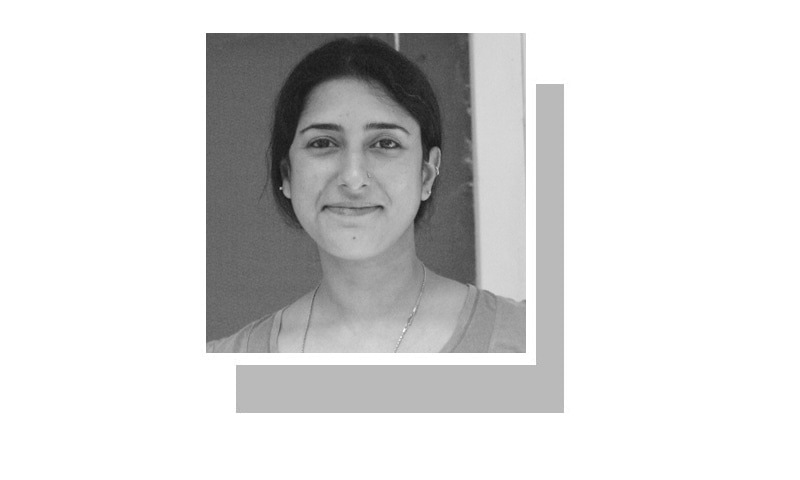
PAKISTANIS love their food, and over the years in each city have developed ‘food streets’ or areas where the menu is famous. If Karachi has Burns Road, one of Lahore’s culinary kaleidoscopes is Gawalmandi. It used to be though, that despite being a favoured destination for foodies, a trip there was not the most pleasant of excursions. Quite apart from the traffic congestion and encroachments, the area was characterised by open drains, piles of trash, etc.
Its fortunes changed around the turn of the millennium, when city authorities decided to clean it up and formally turn it into a pedestrian-only food street. A section of the historical area was selected, the pre-Partition buildings lining it were spruced up and lit artfully, and non-food-related shops and businesses cajoled into relocating. And literally overnight, one of the most pleasant things to do in the evenings became heading out to Gawalmandi to sit under the stars. Needless to say, the makeover was a positive not just for the customers — the area’s economy was also spurred on.
Over the following years, Lahore followed this success up with more food streets in Anarkali, and the Fort Road adjacent to the Badshahi Mosque. Obviously, a clean-up, improved sanitation and lighting, and the creation/promotion of public spaces that are welcoming attracts citizens and tourists by the droves, improves a city’s image, and promotes in its residents a sense of ownership.
Karachi is generally seen as an orphaned city; rarely do city authorities show much desire to upgrade its tattered civic infrastructure. While millions walk the streets of what is often referred to as the country’s economic hub, most appear to simply close their eyes to the ugliness and circumvent the garbage heaps.
Most shut their eyes and avoid the garbage heaps.
Even so, there are from time to time efforts to create attractive public spaces. A couple of years ago, a group of prominent citizens came together to undertake initiatives such as the cleaning up and aesthetic improvement of the City Railway Station. Where city authorities now and then set into motion drives to clean offensive or sectarian-oriented graffiti from public spaces, this initiative went one step further and organised ‘I love Karachi’ and environmentally-educational murals along some major roads.
The latest such venture in the metropolis also appears promising. A house built in the 1930s, in Jamshed Quarters on the historic M.A. Jinnah Road, has been lovingly restored to its erstwhile grace by a philanthropic foundation. Reportedly, it is adorned with hand-crafted tiles and decorated with antiques and collectibles, the concept being part-museum and part-café. One of the TDF Ghar’s attractions is the fact that its roof provides a rather stunning view of the Quaid’s mausoleum. The idea was to create a safe, inclusive space where people can come together and share ideas and opinions, much like T2F was conceptualised.
Similar initiatives have been undertaken by the authorities as well as private citizens in several cities. Even so, cumulatively they remain a drop in the ocean for our urban areas, which overwhelmingly remain littered, dilapidated and lacking in aesthetics. Though millions of lives are conducted in public (as a result of the shortage and cramped nature of most urban dwellings, and large family sizes), there are hardly any public spaces that are clean, attractive, and conducive to measured exchange.
At the same time, our cities are marked by distinct class and economic divides. The residents, especially the younger ones, of outrageously expensive housing in pockets of wealth live lives that are increasingly cut off from the rest of the city where, so to speak, the ‘real world’ exists. Being from the wrong side of the tracks is an everyday reality in our country.
This is unhealthy because it stokes divisiveness and the ‘othering’ of fellow citizens. The problem is to some extent recognised. For example, in Karachi on the weekends, those with money to spare can book a seat for a tour of the city’s old areas and heritage buildings in a shiny, cleaned-up, gentrified bus. But, as one sarcastic article that appeared in the foreign press put it, should there really be any need for armed escorts to visit one’s own city?
Seen through this lens, public spaces that invite intermingling and conversation are an invaluable aspect of city-building and promoting peace. Think of the role played by the Pak Tea House in nurturing ideas and a vibrant literary scene. But then it was allowed to die and for a long time, the space it had occupied functioned as a tyre shop. Now I hear that the institution has been resurrected, and that is a relief. Pakistan’s cities need more such places, as many as we can build — not just places to eat, but those where conversations take place.
The writer is a member of staff.
Published in Dawn, August 28th, 2017











































